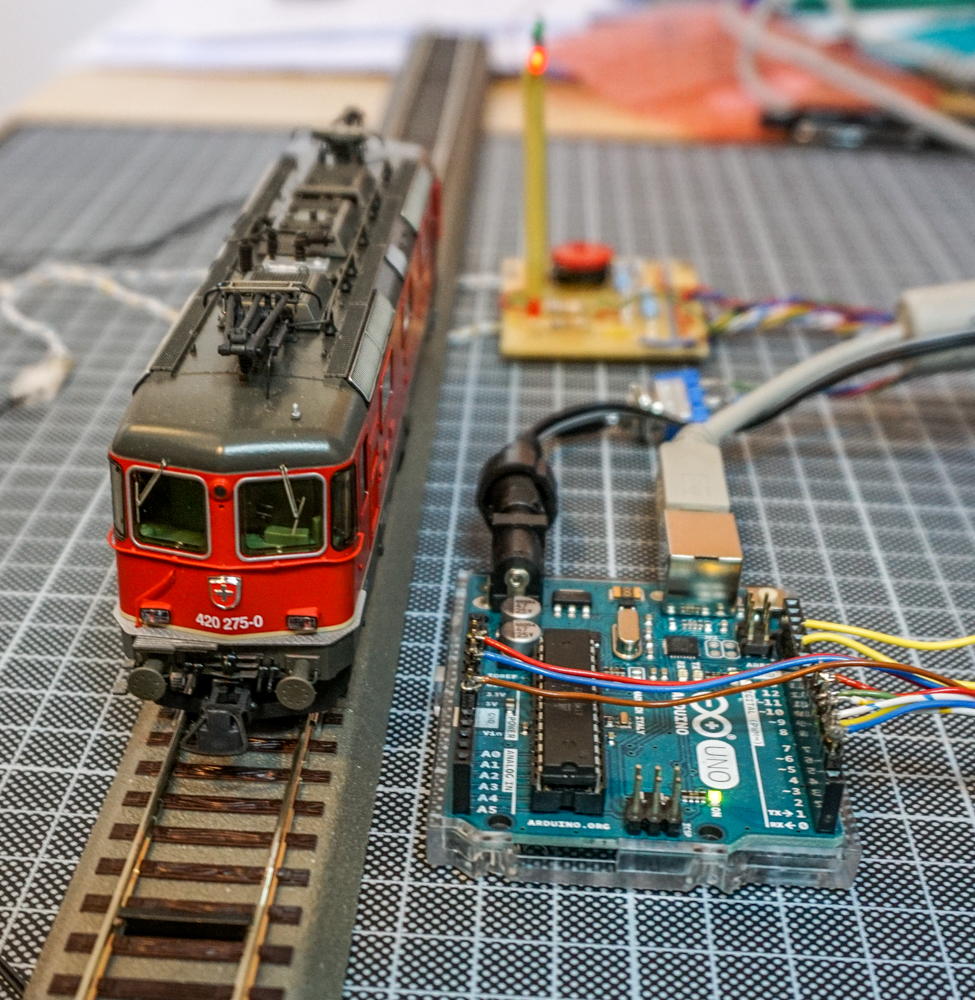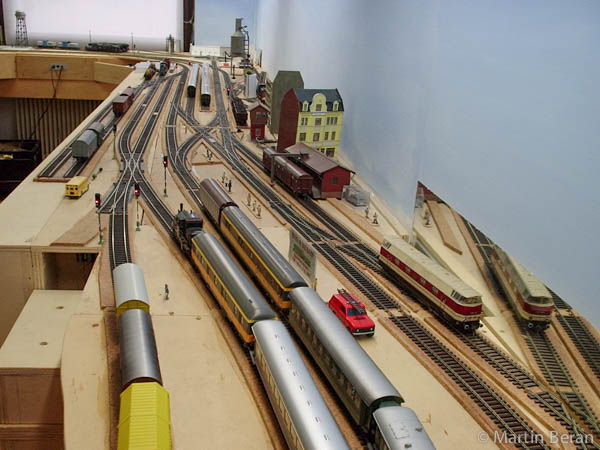
Arduino poweredSignal ControllerPart 1/8 – An Introduction
Since moving back to Europe I did not occupy some space for a model train set yet. What to do for the avid model railroader lacking a layout? Well armchair-modelrailroadign os one option but I look forward to some “Teppichbahning” (“Carpet Train-ing” – German model railroader slang for “running trains on the floor) as well as toying around with electronics. After years of neglecting programming and HW design I went back and looked at the options available today. I learned that not too much has changed- well some interesting things have surfaced the last 7-8 years.
Tinker boards and 8 bit AVRs
 On one hand side, the 8 bit micro controllers I used for my projects in the late 2000s are still around. This is good news for myself as this promises an easy start as well as very low cost components. On the other hand, tinker boards aimed for the vivd maker redefined the term “eval board”. Affordable, versatile with great communities to support newbies and pros alike, these little gadgets created a whole new approach to programming and embedded design. Beside of the linux based Raspberry Pi the Arduino micro controller board is one of the best known devices around. As the Arduino UNO is based on an Atmel 8bit AVR I got curious what this is all about and how it is different from working on this platform than rather developing Hard and Software totally out of scratch. This series is about developing a small, micro controller based project.
On one hand side, the 8 bit micro controllers I used for my projects in the late 2000s are still around. This is good news for myself as this promises an easy start as well as very low cost components. On the other hand, tinker boards aimed for the vivd maker redefined the term “eval board”. Affordable, versatile with great communities to support newbies and pros alike, these little gadgets created a whole new approach to programming and embedded design. Beside of the linux based Raspberry Pi the Arduino micro controller board is one of the best known devices around. As the Arduino UNO is based on an Atmel 8bit AVR I got curious what this is all about and how it is different from working on this platform than rather developing Hard and Software totally out of scratch. This series is about developing a small, micro controller based project.
The Duo-Signal Controller Project
The idea for the DSC project is not really new. I used some sort of circuitry for controlling signals on my first BTB layout built in the late 1990s till 2009. Trains were controlled via DCC by the operators but switches and signals operated in conventional, analog fashion without any feedback, or control towards the DCC system. The train engineer had to monitor the route and obey signal aspects. The dispatcher or tower man was responsible for aligning the correct paths for the trains.

The signals where set to “clear” at the tower control panel and fell back to “stop” once the train entered the following section of track automatically. I used so-called “daylight” signals hence only lights changed an no mechanical parts had to move. But the change from one aspect to the other happened in prototypical way with a twinkle.
This time I am looking for a device that controls two signals independently and mimics automatic block control. Basic mode is to sense an approaching train, change to a clear signal indication if the following track is free and fall back to “stop” once the train entered this very section “behind” the signal. Needless to say that it should stay red as long as the train occupies the track behind the signal, even another one approaches the signal still declaring “stop”.
The project series at a glance
as I am writing this post, sample PCBs as well as components for the first version of the Duo-Signal Controller have been ordered. During this series of posts I’d like the interested visitor to follow me along as the project takes shape from idea to concept to deployment. The planned sections will be:
-
An introduction to the project- that is this very post.
-
A wish list to myself- lets discuss specifications and see if we can get everything I hope for.
-
Building a prototype- proof of concept with Arduino Uno.
-
Working with the Arduino platform and IDE
-
Development of a stand-allone-alone Signal Controller device
-
Circuit development and PCB design with KiCad
-
Build the Dual-Signal Controller. Soldering SMD and through hole components
-
Finally! Test and Operation – deploy the devices along the tracks
